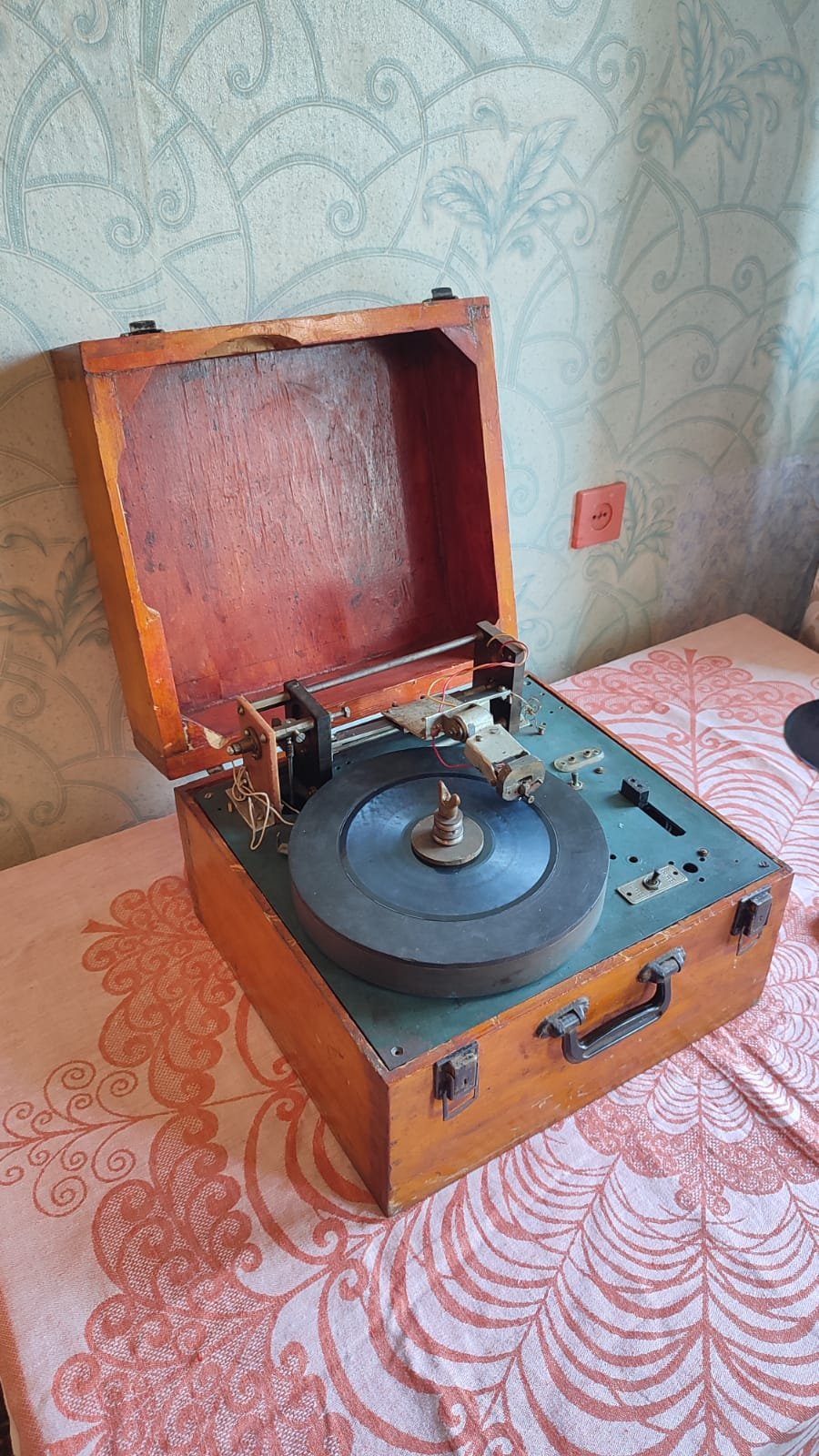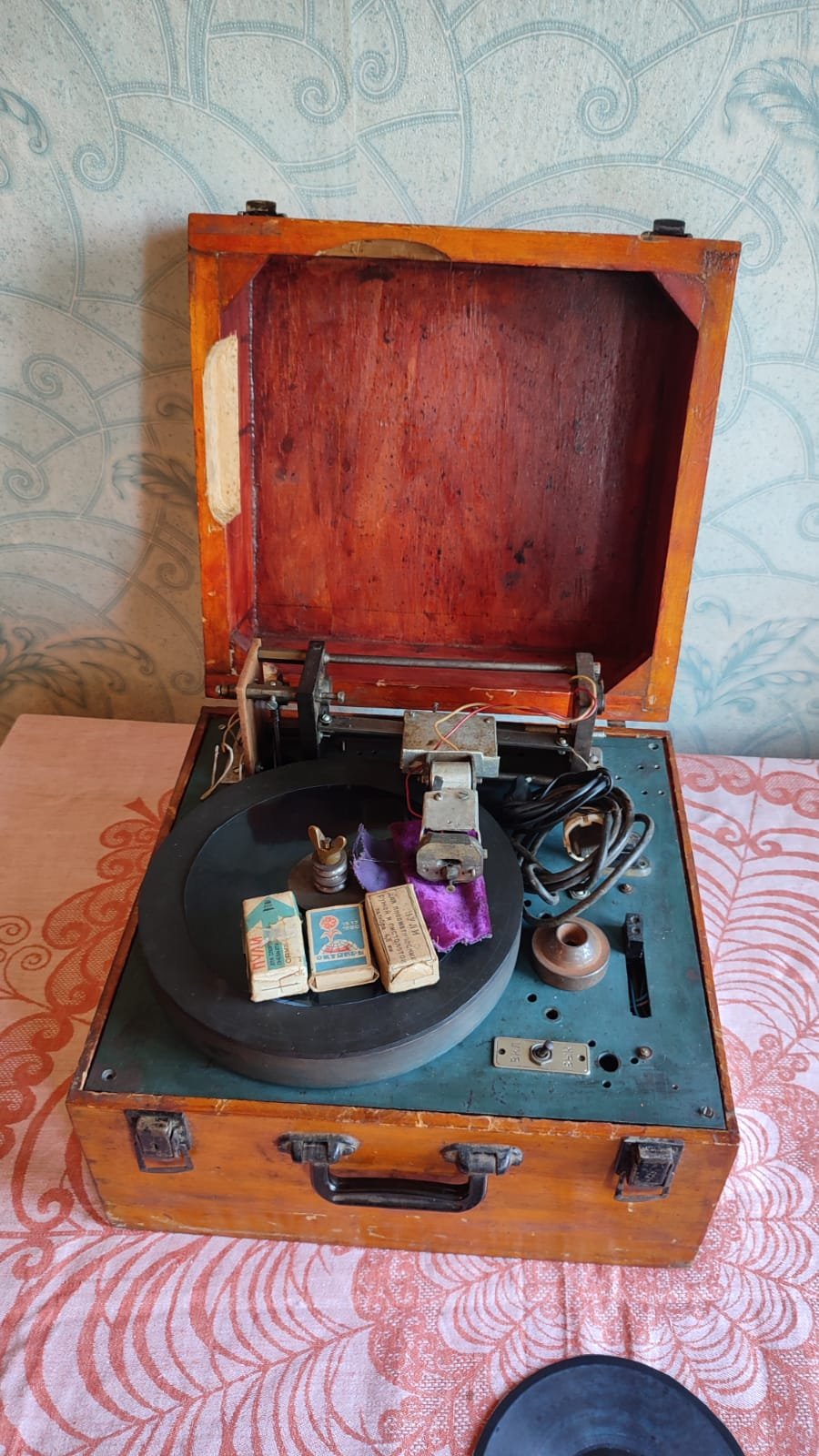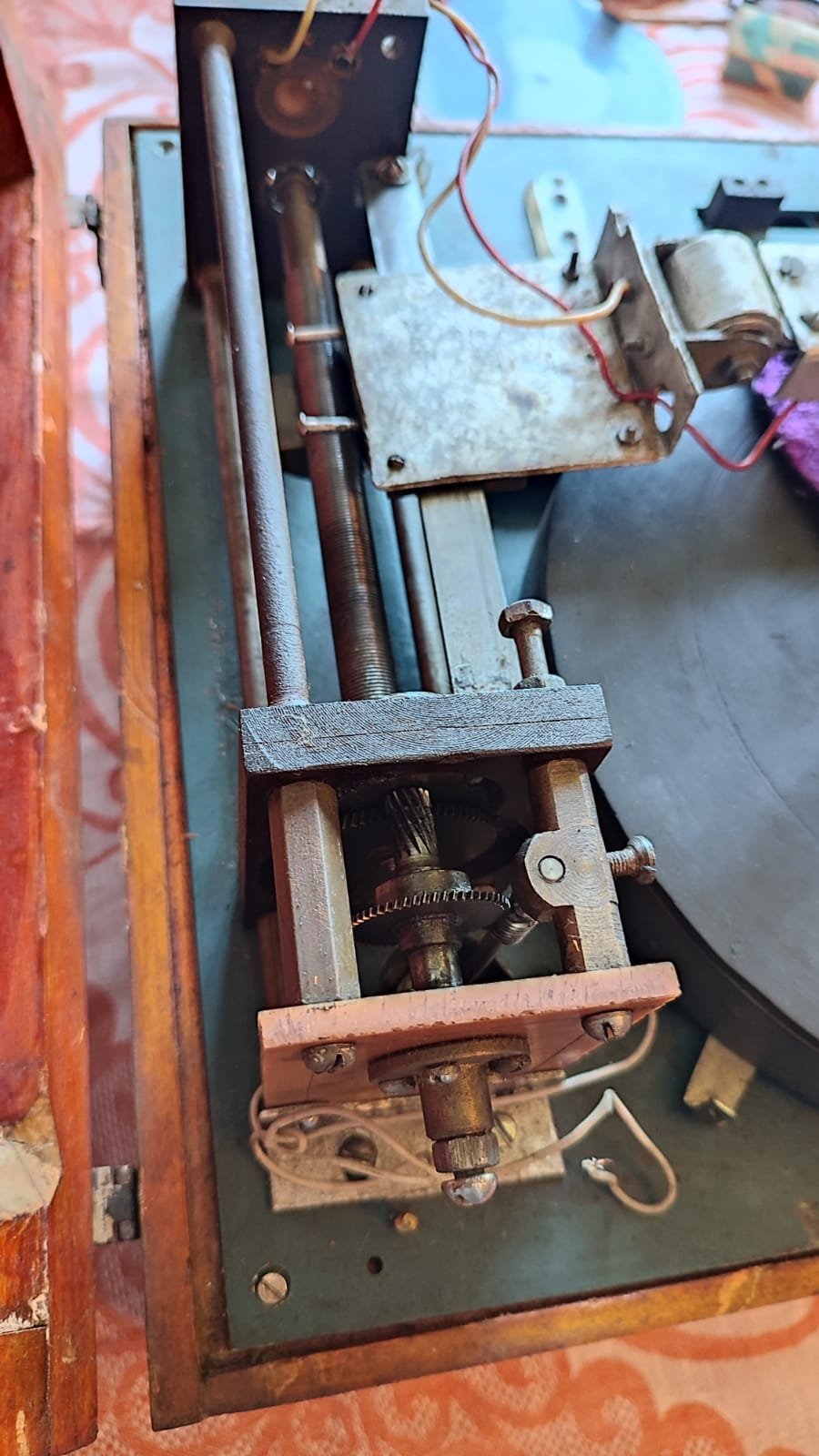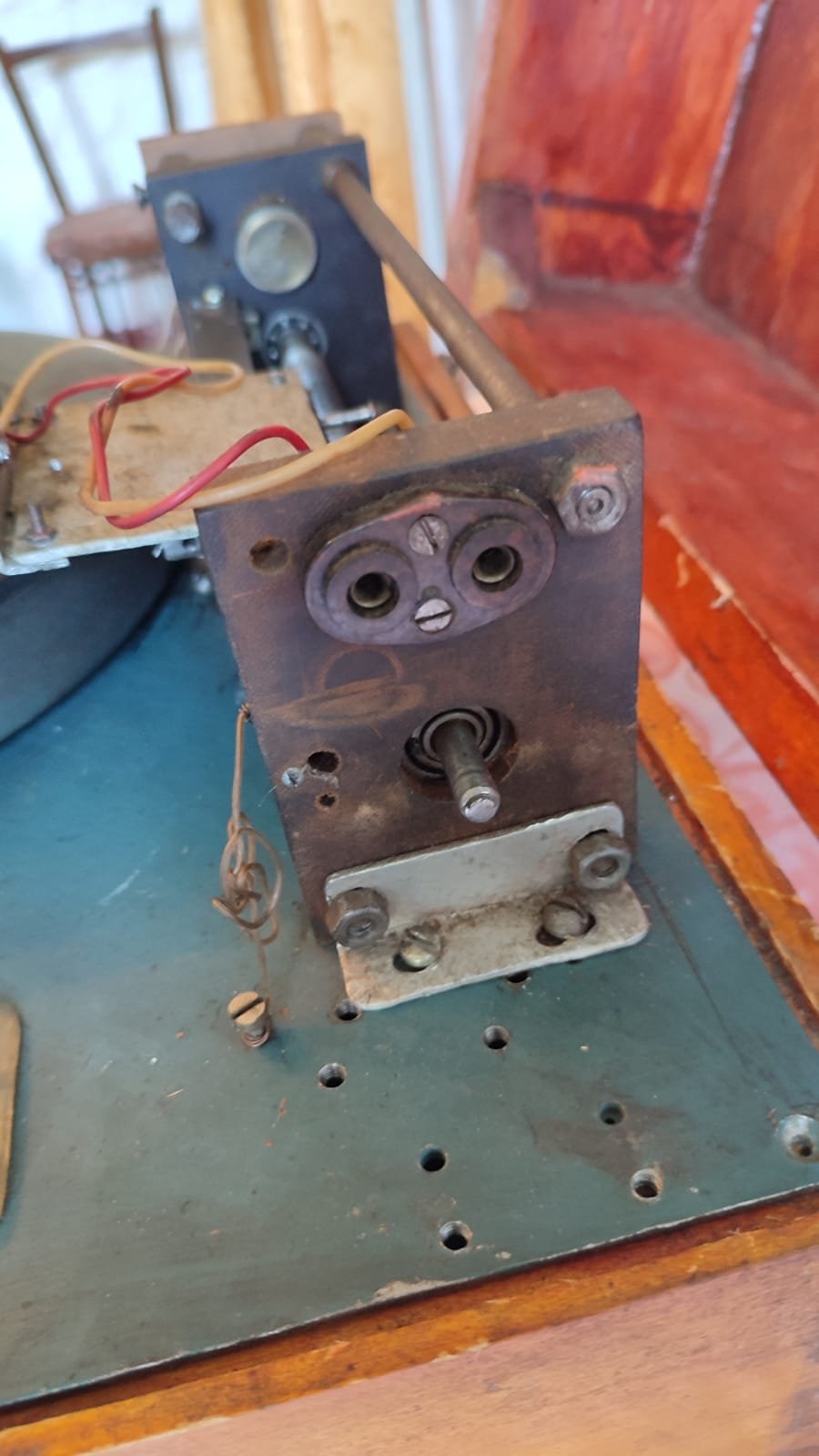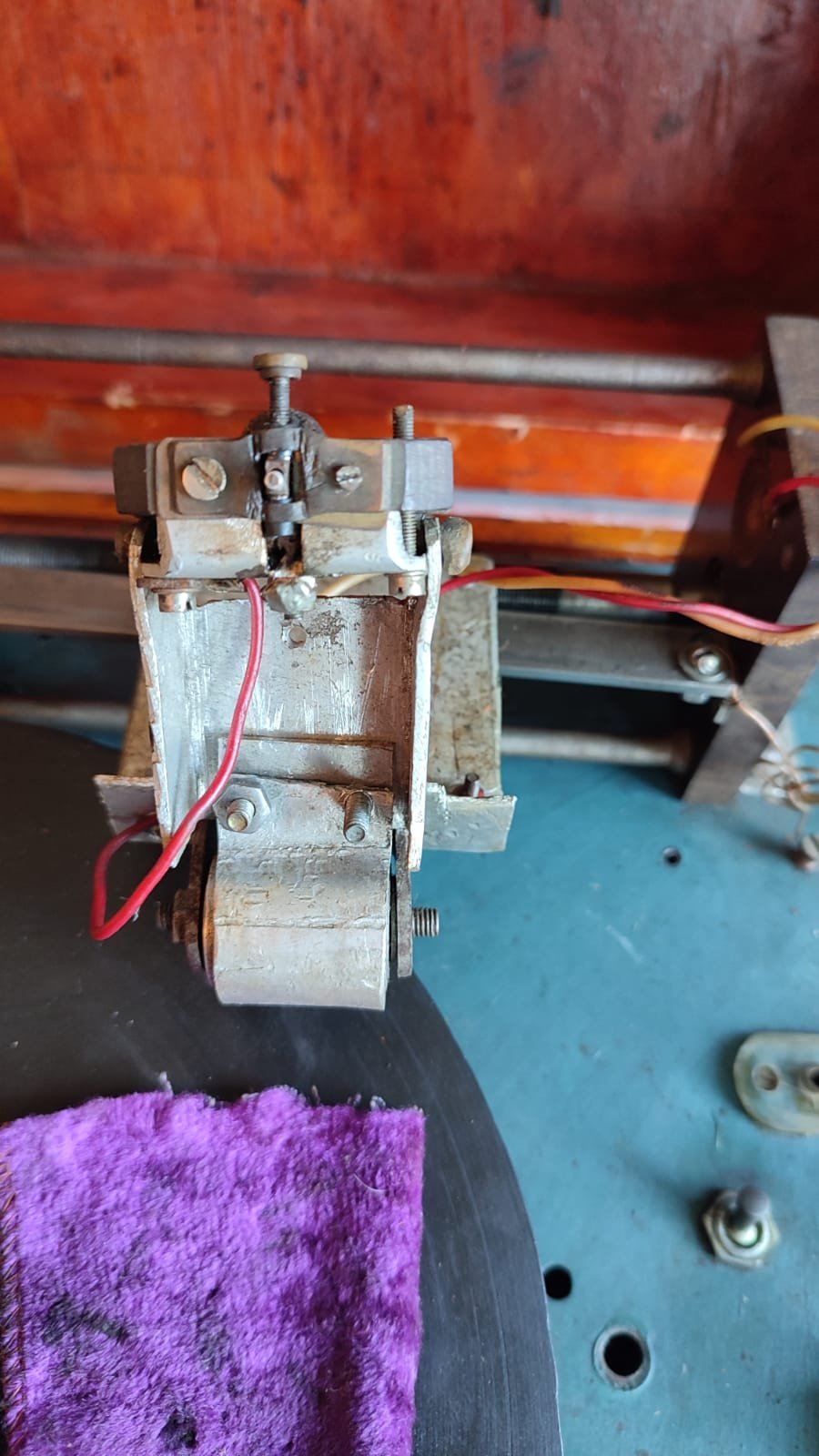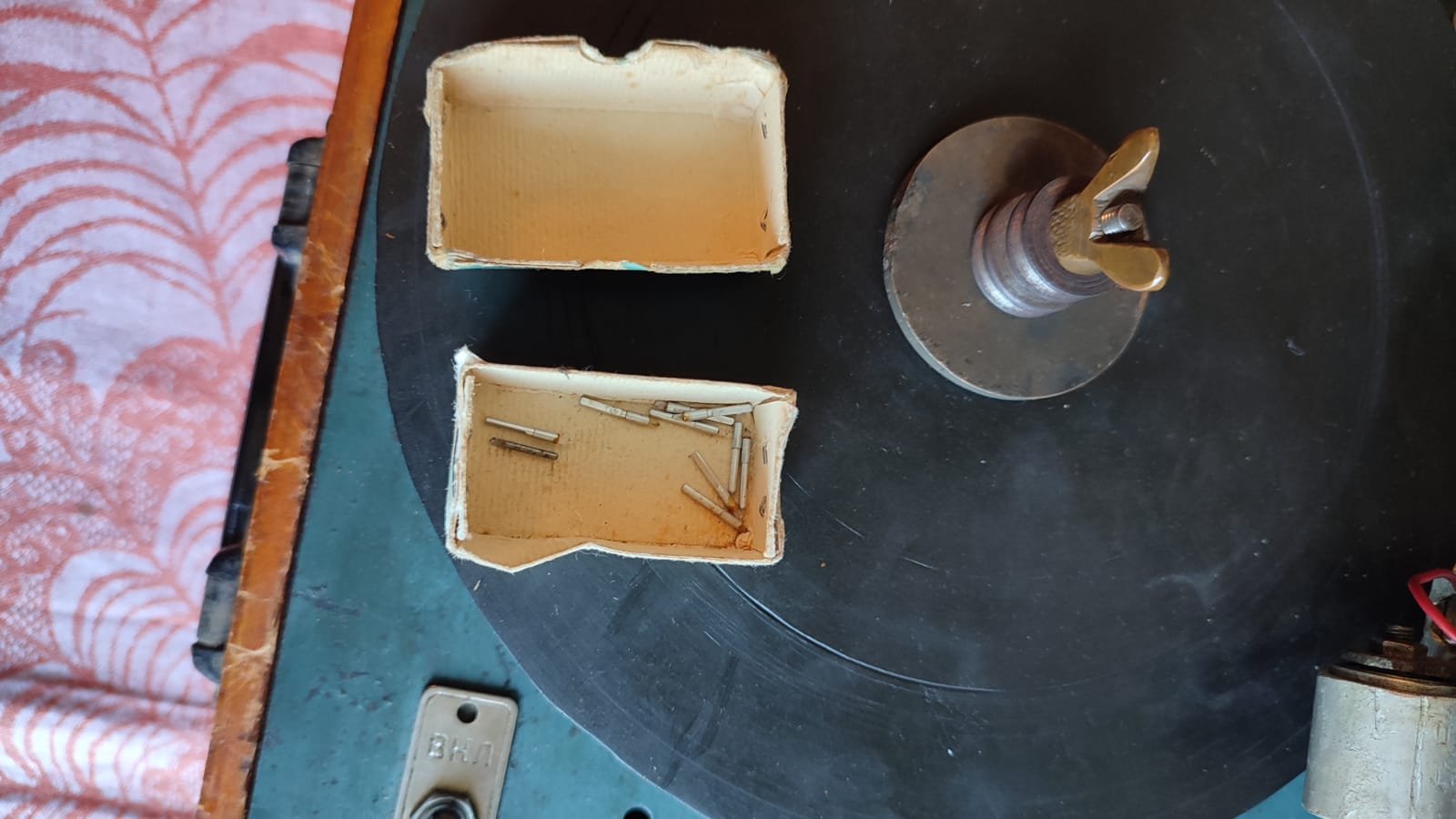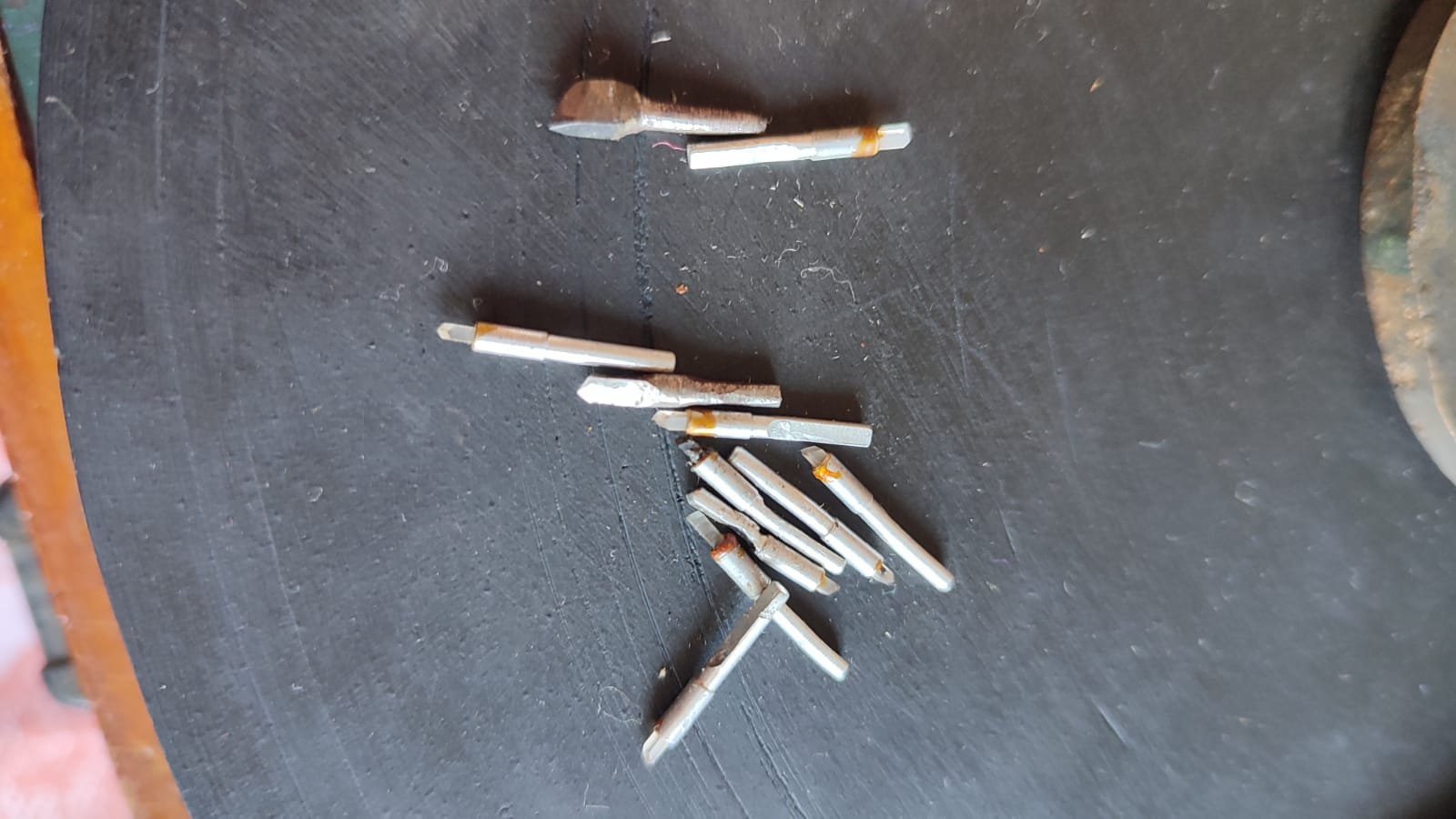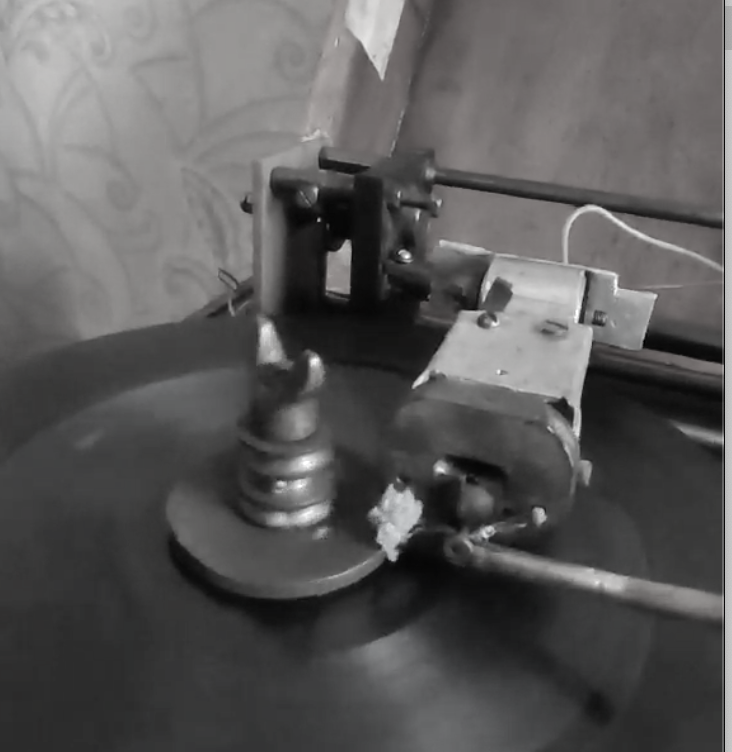Dushenko Nikolay Ivanovich
I have recently been in dialogue with Slava (Dushenko Vyacheslav Nikolaevich), a Ukrainian whose father built himself a recording lathe to cut x-ray records in the 1960s. Below is Slava’s story together with a film he made of his father’s beautiful machine in action - an absolute perfect tutorial of how to cut bone music.
“I live in the village of Shcherbinovka near Toretsk (the old name is Dzerzhinsk) in the Donetsk region of Ukraine. My father, Dushenko Nikolay Ivanovich, was born in 1938 and lived here all his life and worked as a precision machinist in a factory. He had a hobby of radio electronics and engineering and in 1961 when he was 23, he made an apparatus for making records on x-rays (a recording lathe).
It has two motors, an arm with a thread and a recording head with a cutting needle, I still have some needles -they looks like they have diamond heads (possibly sapphire) and there are home-made ones made of metal. The turntable rotates at 78rpm. The case is homemade, made by my grandfather, who was a carpenter.
My father made many records on x-ray with this hand made machine. Maybe some residents of the village still have records that he wrote. The machine is in excellent condition and has always been kept in our house. We treat such things with extreme care.
This is memory
At first father recorded music from the radio but then he began to seek out music that was forbidden and played on the radio at night by the so called 'radio hooligans’ - people who made home-made radio transmitters, and were broadcasting illegally on the short wave (See below).
I have been fond of radio electronics since childhood and was always interested in such things so my father showed me how it was done, and told me how it used to be in the old days when a lot of music was banned and they could put you in jail for recording. You had to record in secret.
He didn’t do it for money, but for pleasure. Before he and my mother were married, he would make records for her and for friends. Schoolchildren would come before the holidays to order make greetings for their teachers on a record. First he would wash the surface of the x-ray film with acid to remove the image of bones then glue a picture or a photo that the children brought him under the film and punch a hole in the centre (for the spindle. People like my father, recorded either straight to x-ray film or first on a tape recorder, and then copy it onto x-ray (Note: this is how the ’sound letters' were made).
In those days, there was a shortage of tape on a tape recorder, so he made a lot of records for people in a department store, and they gave him reels of tape.
I started working with him at the age of 8 and we made several records together. He liked the songs of Leonid Utyosov like Mishka or The Black Cat, and some foreign songs. I don’t remember which forbidden songs we recorded but I was born in 1970 so I was interested to record new music. We recorded with a tape recorder, and then I made it into a record with his machine.”
The song Slava copied is ‘The Old Drivers Song’ by Leonid Utyesov (Песня старого извозчика - Леонид Утесов). He played it back on a Soviet blue Jubilee portable record player - a very popular model in the 1960s.
Slava went onto to tell me more about the ‘Radio Hooligans’ - we have written about these intrepid souls before:
“The so called ’radio hooligans’ were young people who broadcast on the radio without permission. I would tune into such broadcasts, I remember listening to the music they played and hear them talking - they joked about what kind of music they would play - and they paid for it .. some were put in jail.
Most of these hooligans are no longer alive, though one, Vasily, a friend of my father, also lives in in our village. He is now a legitimate radio amateur but very old, and probably doesn’t go on the air now there is a war.
He had a very funny story about broadcasting songs on the air:
Patrols had been created to catch such ‘radio hooligans’ - they drove through the streets of the village in special cars equipped with a receiverand to track the house from where the transmission was being made. Vasily, who had the call sign “Solokha”, was broadcasting songs, and saw through the window that the patrol was entering his yard. He quickly disconnected the transmitter from his radio and ..... he threw it into a pot of borscht, which his wife was cooking on the stove. The patrol came in, searched the entire house, but no one thought to look into the pot on the hot stove..”
Thank you so much Slava - it is absolutely wonderful to hear your story
Check out the gallery below for images of the recording lathe.


